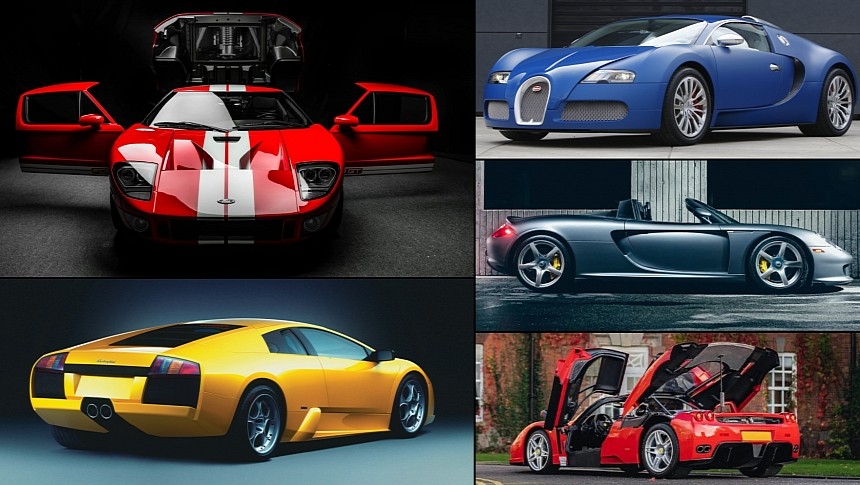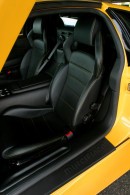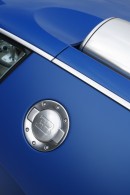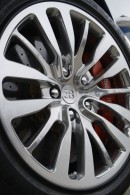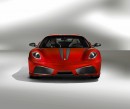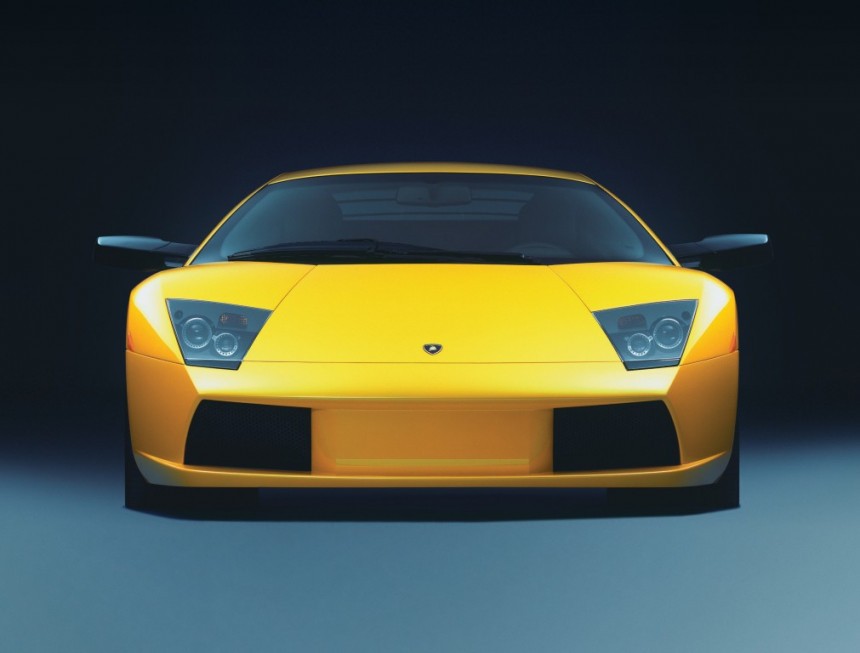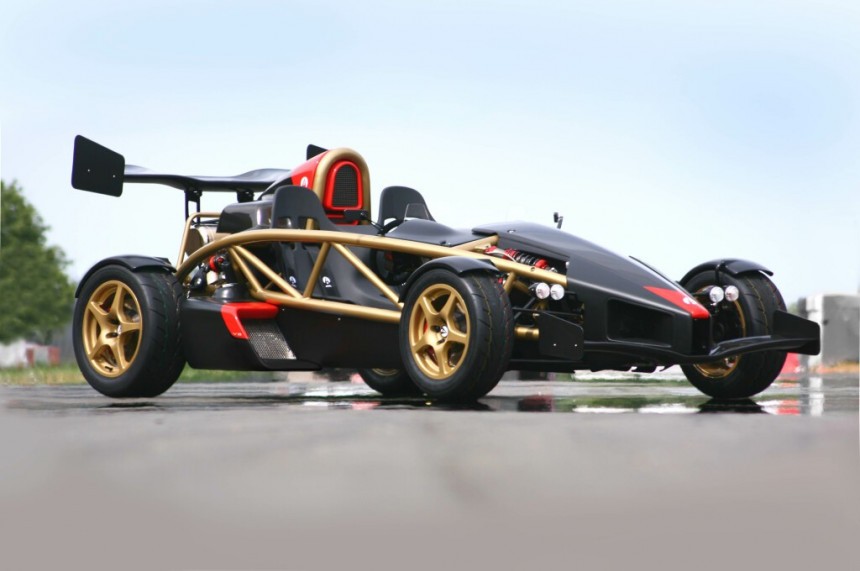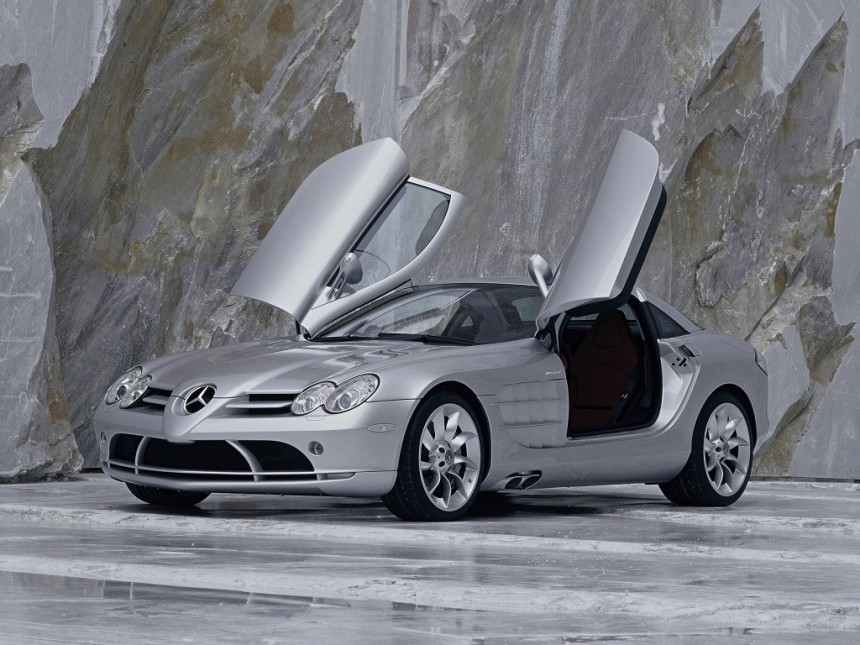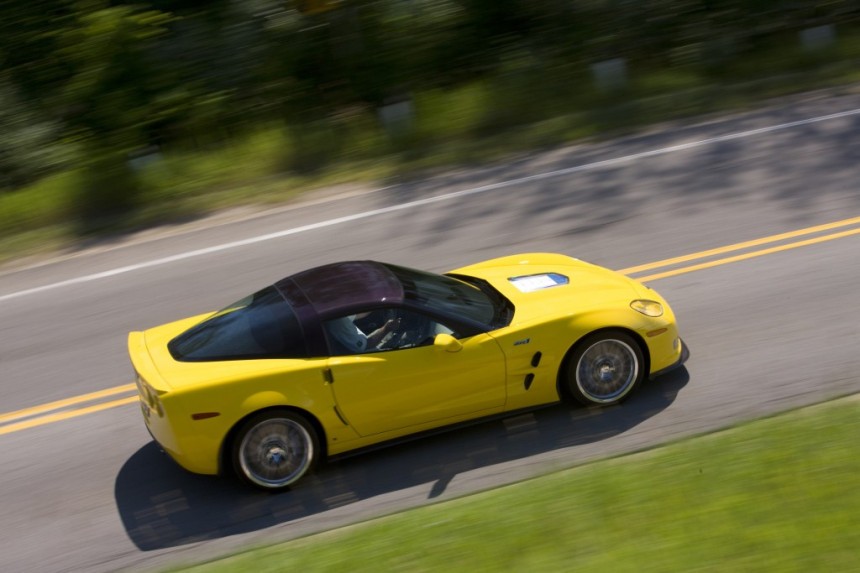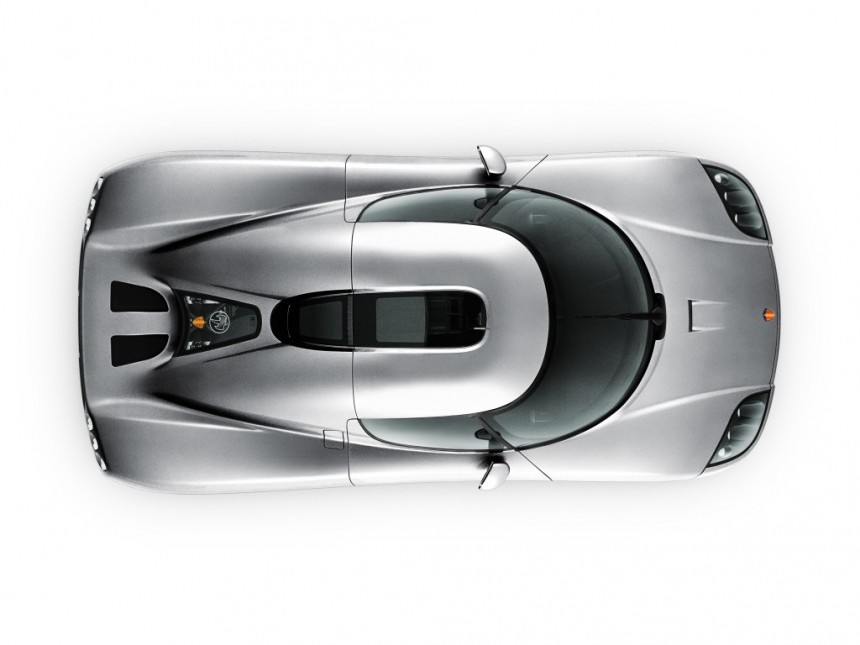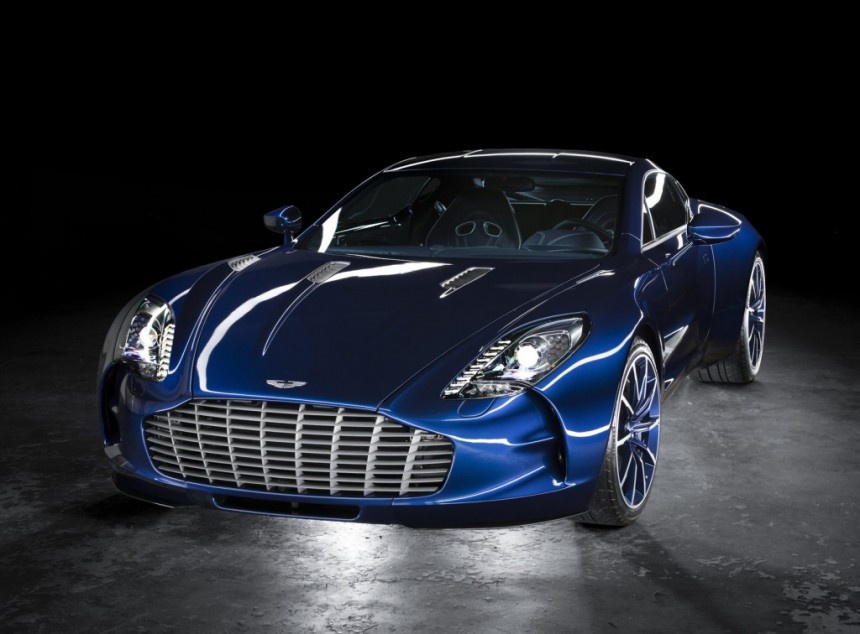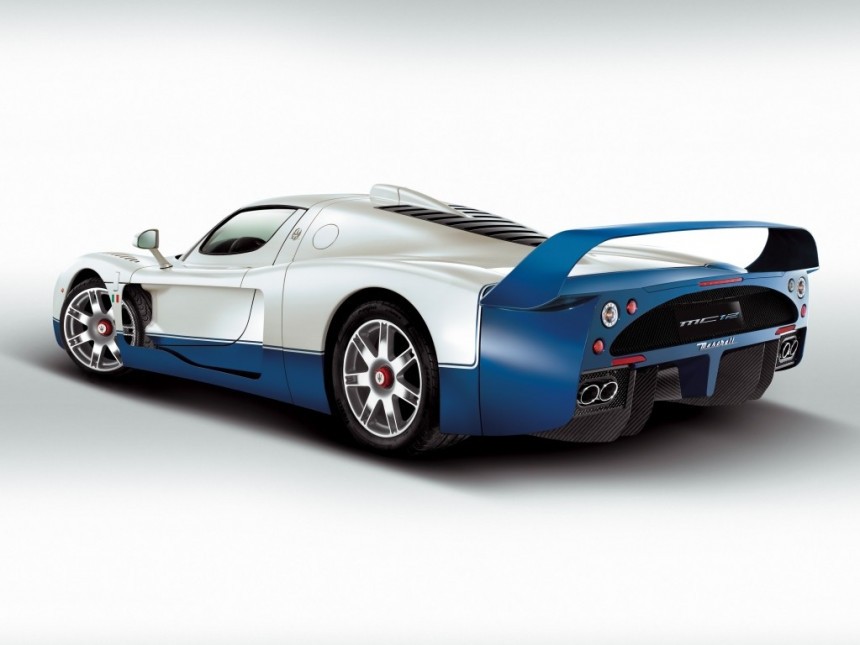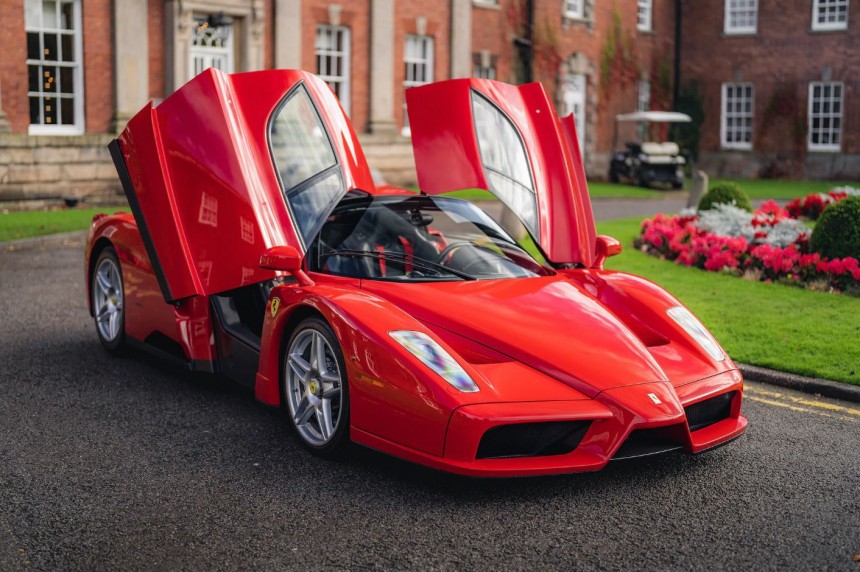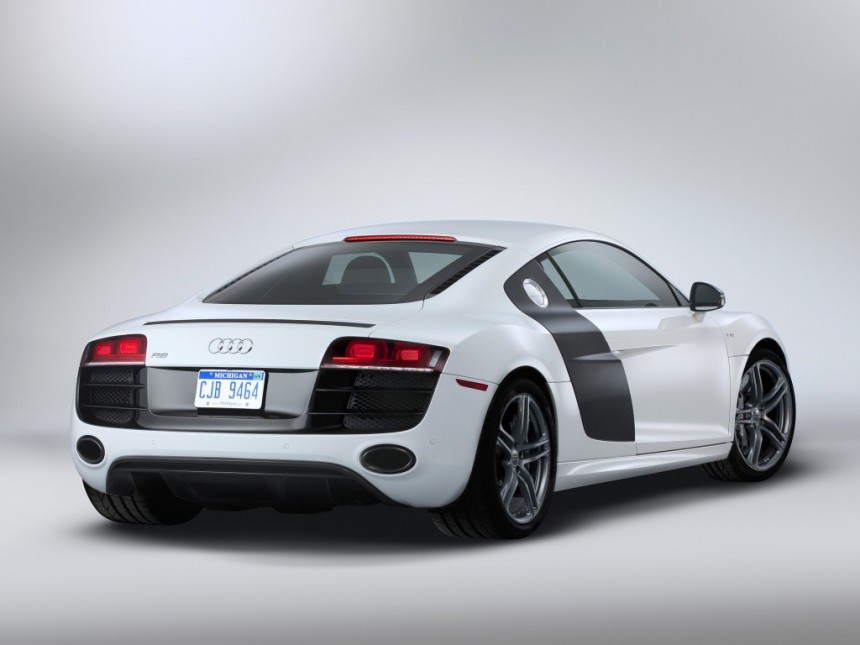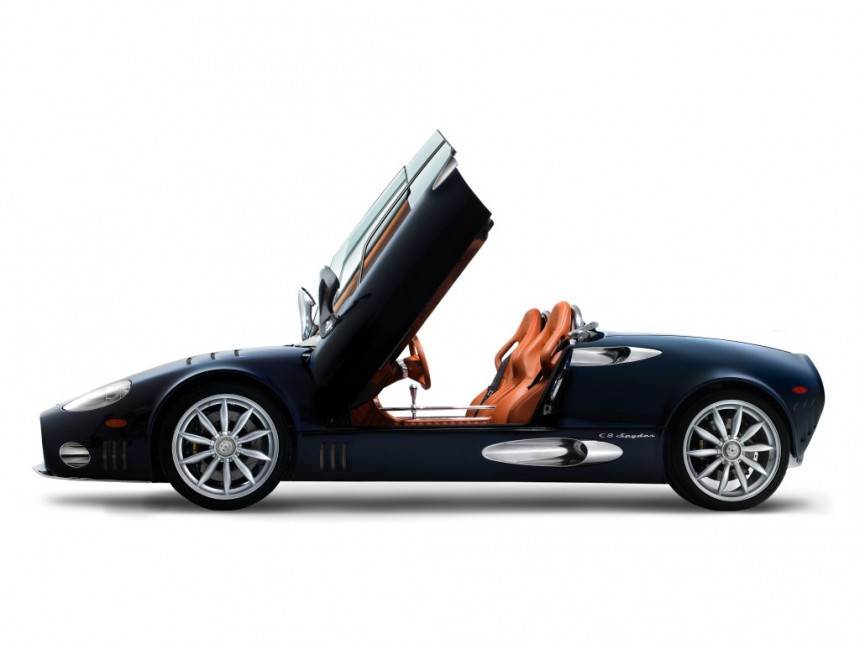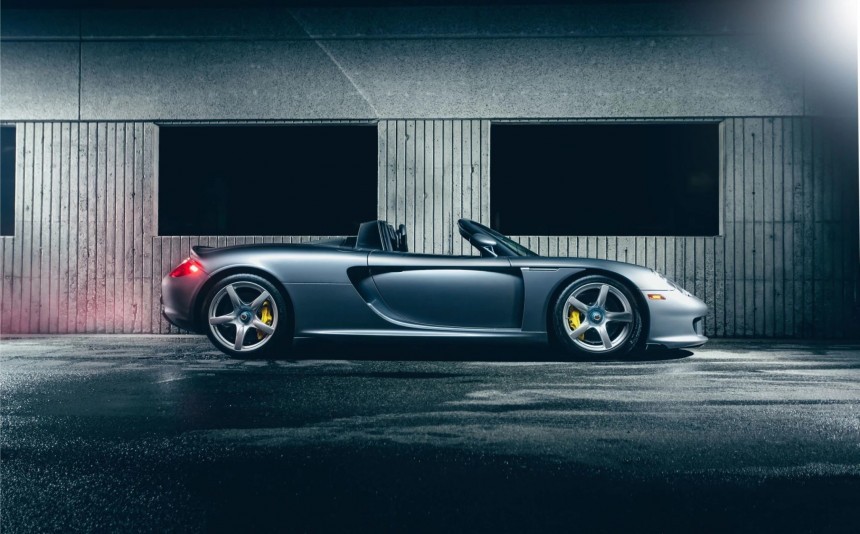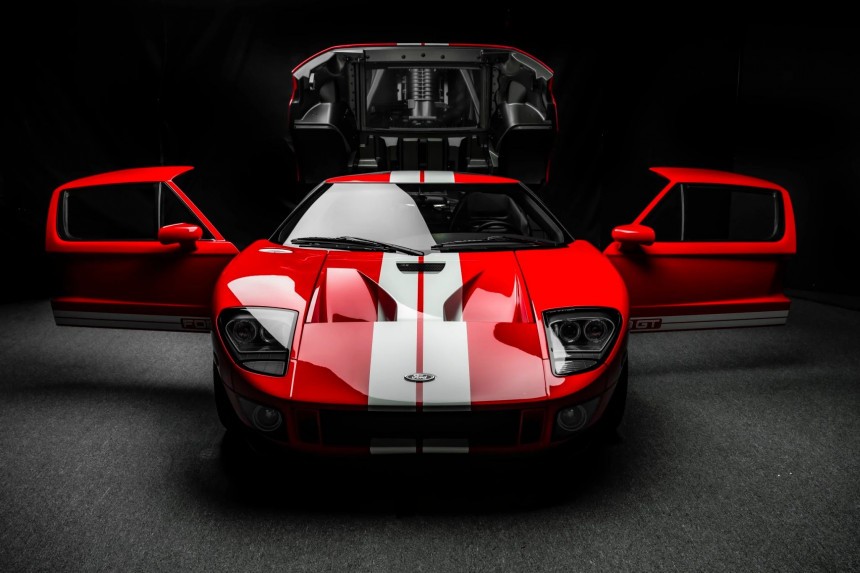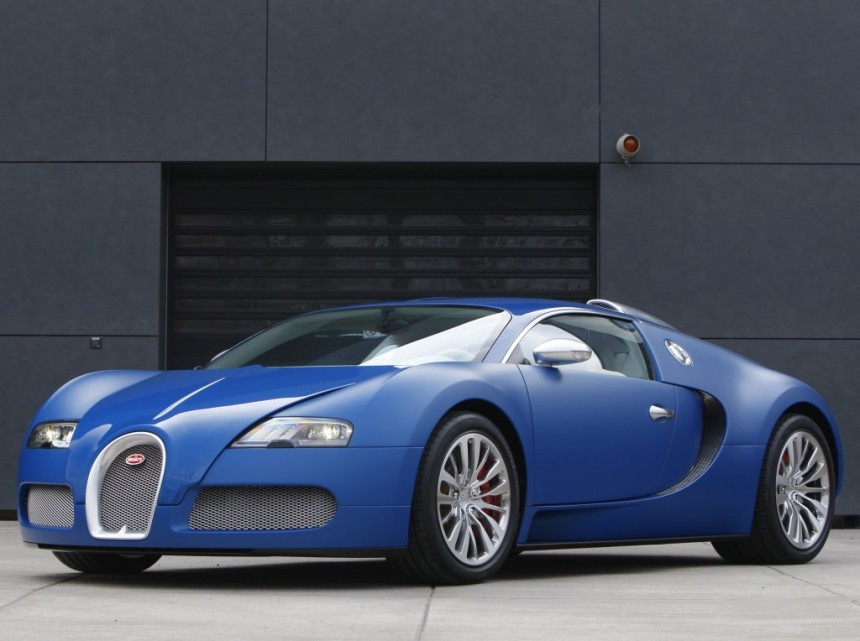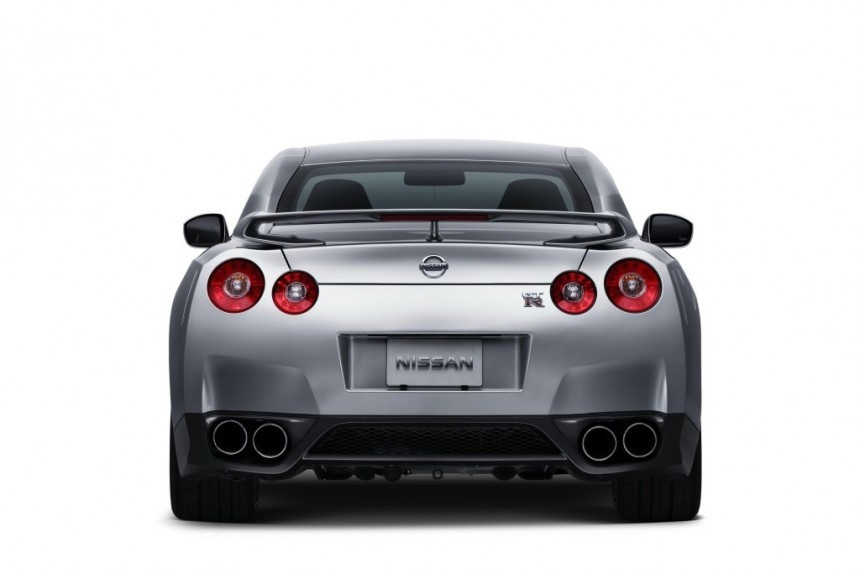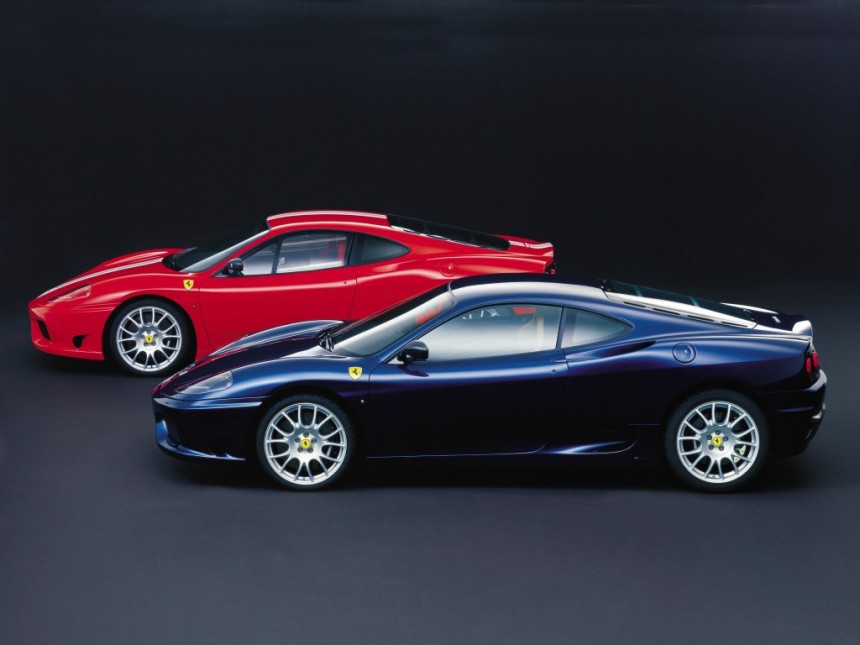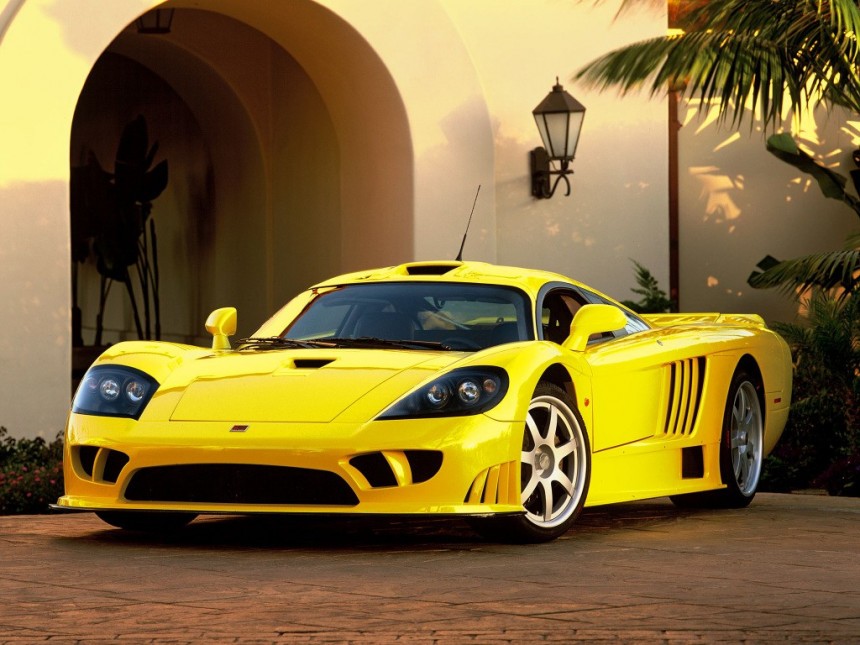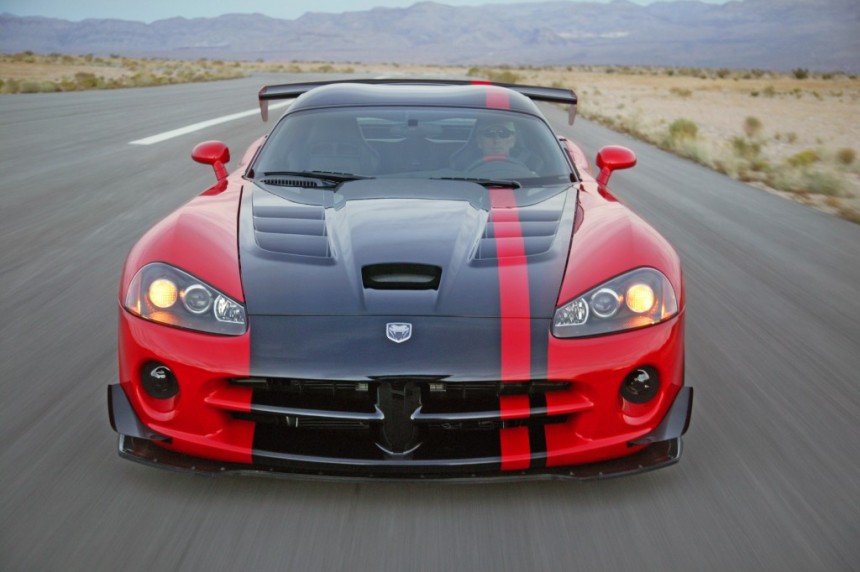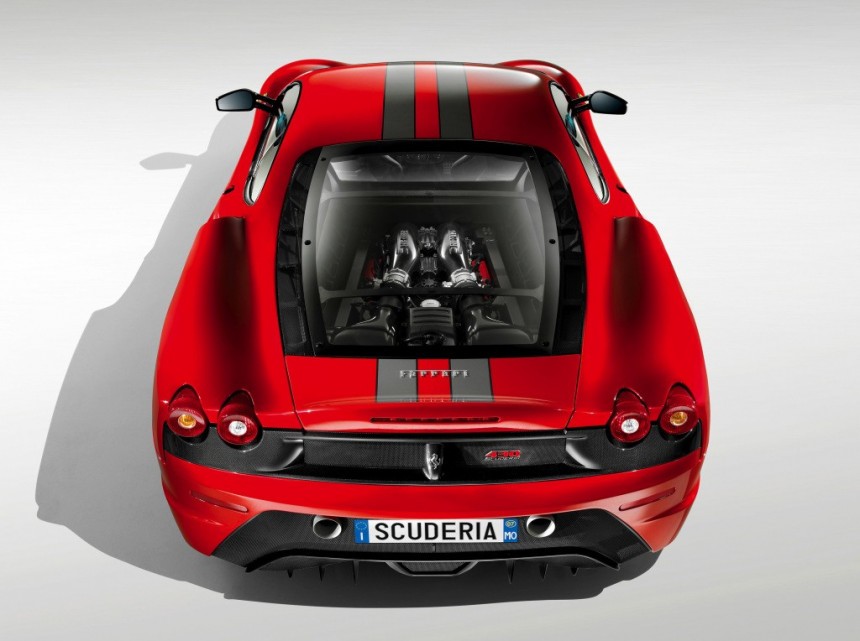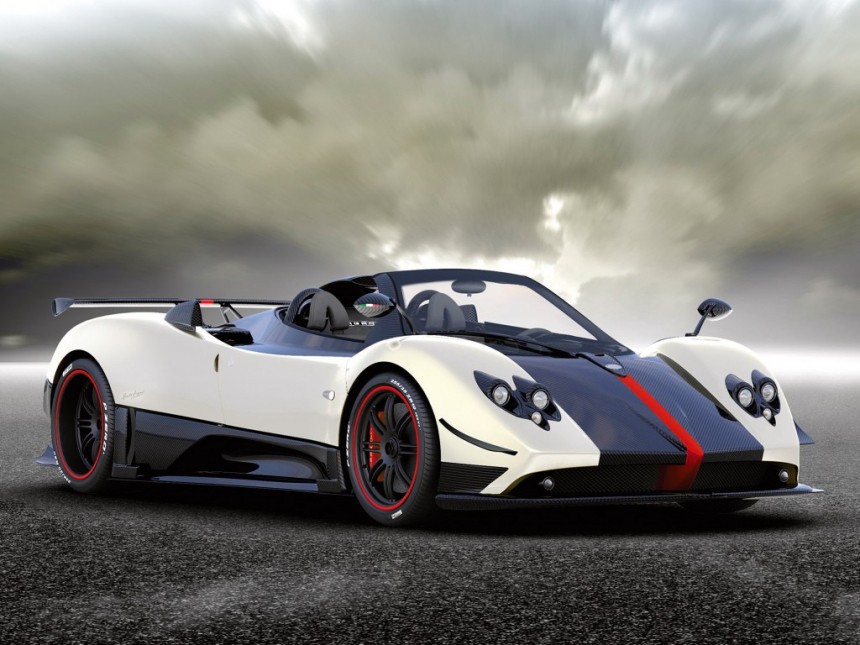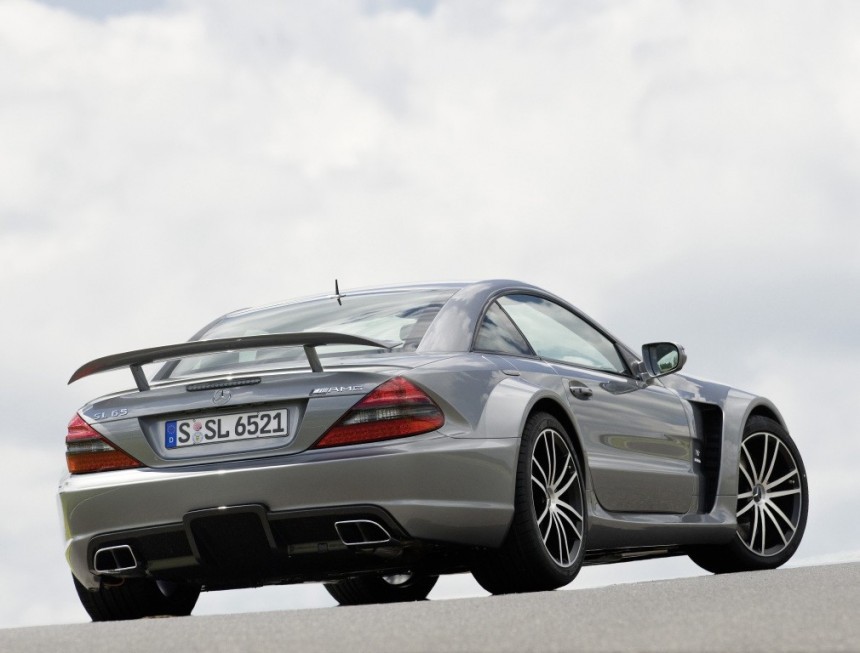Utility is especially important to us humans. The Stone Age is called this way due to the stone tools our ancestors used. Mankind then learned how to control fire, and with said fire, our ancestors learned how to smelt copper with tin to produce bronze tools, weapons, and so forth. Utility is a big theme in the automotive industry as well, more so nowadays when everyone and their dog wants the latest and fanciest utility vehicle.
Even though automobiles were originally intended to replace horses – which they did to a great degree – many peeps understood that automobiles go beyond their utilitarian aspect. For example, racing taps into our emotional side rather than our rational side. The same can be said about supercars, which are hideously impractical due to the design compromises made in order to squeeze out as much performance as possible.
Certain enthusiasts don't consider the Miura as being the world's first supercar, yet the Miura got the ball rolling in the 1960s. The wedge school of thought started gaining traction after Lamborghini presented the Marzal and Alfa Romeo the Carabo, superb concepts penned by Marcello Gandini.
The '80s and '90s also saw developments in the supercar genre, but nobody was prepared for the Noughties. That's an extremely special era for this particular segment of the automotive industry. For starters, a whole lotta supercars were introduced back then. Also remember the plethora of technological advances from the 2000s, with nearly all of them designed to make supercars faster, quicker, as well as a little better in the corners.
From the many supercars of said era, us folks at autoevolution have selected 20 that stand out for all the right reasons. That being said, let's kick things off with a Raging Bull that continues to fascinate to this day.
Named after a rather feisty Spanish fighting bull, the Murcielago is the last old-school supercar from the Raging Bull of Sant'Agata Bolognese. You see, its 6.2- and 6.5-liter V12 engines are developments of the Giotto Bizzarrini-developed 3.5L mill from the 1960s.
The 6.2 rocks 572 horsepower and 479 pound-feet (650 Nm) at full chatter, whereas the 6.5 was exclusive to the LP 650-4 Roadster and LP 670-4 SuperVeloce. LP as in Longitudinale Posteriore, the first three digits for peak output in metric ponies, and 4 meaning all-wheel drive.
Exclusively coupe, the SuperVeloce – which is Italian for SuperFast – came with either a good ol' manual or an automated manual. The Volkswagen Group-owned automaker intended to produce 350 units, yet 186 were finished because Lamborghini had to retool its factory for the Aventador. Powered by a newly developed V12 behemoth, the Aventador rolled off the assembly line from the month of February 2011 to September 2022.
Best described as four-wheeled insanity, the Atom 500 is a pretty rad car. Introduced in 2008, the open-wheel sensation weighs 550 kilograms (make that 1,213 pounds) and belts out 500 horsepower from a 3.0-liter V8 built from a couple of Suzuki Hayabusa engines.
In terms of power-to-weight ratio, few road-legal vehicles match the Atom 500. But looking at the bigger picture, it's the driving experience that makes the Ariel such a mouth-watering proposition for us enthusiasts. Peak torque arrives at 7,750 revolutions per minute – which is more than my personal automobile can handle from its puny four-cylinder engine – and maximum power is delivered at a spine-tingling 10,600 spinnies.
Only 25 examples were built at an asking price of £146,699 (including VAT) each. In other words, it retailed at 188,730 freedom eagles. Adjust for inflation, and let's just say that it's a rather pricey thriller.
In the eyes of the uninitiated in all things four wheels, the SLR is a rather curious thing. For starters, the lack of AMG badges might raise a few eyebrows. But most importantly, it features McLaren badges prominently.
A development of the SL 55 AMG from the R230 generation, the SLR McLaren sports a different codename for its 5,439-cc engine as well: M155 as opposed to M113. Augmented by a twin-screw blower, the 5.4-liter V8 pumps out as much as 680 horsepower in the High Downforce Kit version announced by none other than Woking-based McLaren in December 2021.
Born during an era when Merc owned 40 percent of the McLaren Group, the SLR was developed under the careful supervision of a very talented chap. Does Gordon Murray of McLaren F1 fame ring a bell? Yeah, the very same Gordon Murray who served as technical director for the Honda-powered McLaren MP4/4 that won a jaw-dropping 15 races out of a 16-race season.
The sixth-generation Chevrolet Corvette ZR1 is a car of many firsts. Although Chevrolet dealers offered a Paxton supercharger back in 1954 for the C1, the C6 ZR1 is the first 'Vette with a factory-installed blower.
It's also the first Corvette to crack into the 200s, with Chevrolet quoting 205 miles per hour (330 kilometers per hour). The beating heart of the ZR1 is called LS9, which is an LS3 on steroids. The 6.2-liter supercharged V8 was also used by the Holden brand in the limited-edition HSV GTSR W1 and HSV Maloo GTSR W1.
The ZR1 further distinguishes itself from the Z06, Grand Sport, and base 'Vette by means of unique VINs carrying the sequential build number. More specifically, a vehicle number ending in 001 indicates that it’s the first ZR1 made that year. Just under 4,700 units were manufactured between 2009 and the 2013 model year.
The CC8S boasts 655 horsepower from a 4.6-liter supercharged V8 sourced from the Ford Motor Company. The succeeding CCR leveled up to 4.7 liters and 806 horsepower. Come 2006, the CCX entered production with a Koenigsegg-developed monster.
In addition to severing ties with the Ford Motor Company, the Swedish automaker developed the CCX specifically for entering the United States market. As for its name, CC means Competition Coupe, whereas X is the Roman way of saying 10. The X in CCX marks a decade since the first test drive of the CC8S-previewing CC prototype at the Anderstorp Raceway in 1996.
A twin-supercharged V8 that runs perfectly fine on 91 octane, the CCX's beating heart was punched out to 4.8 liters for the CCX Edition, CCXR Edition, and Trevita. At most, said engine cranks out 1,004 horsepower and 797 pound-feet (1,080 Nm). Top speed? That would be over 250 miles per hour (400 kilometers per hour).
Bodied in aluminum and built around a carbon-fiber monocoque, the One-77 is a bite-the-back-of-your-hand pretty super grand tourer. Think of it as the DBS V12 after hitting the gym. Different in many respects from the DBS V12, which uses a bonded aluminum platform, the One-77 was limited to… wait for it… 77 units.
The most desirable of the bunch is the Q series, referring to the British automaker's personalization wizards at Q by Aston Martin. Seven units were offered in total, featuring metallic gray, sold white, and black paint finishes with either full black or two-tone interiors.
As opposed to the 5.9er of the DBS V12, which came from Aston Martin's factory in Cologne, the 7.3-liter colossus of the One-77 was fettled by Cosworth. Even though it's based on the 5.9er, the 7.3 is 15 percent lighter, tipping the scales at 260 kilos (573 pounds).
Fabulous in many respects, the MC12 wasn't allowed to be as great as it could've been. The Prancing Horse of Maranello and House of the Trident were in cahoots back then, and Ferrari couldn't allow the Modenese automaker to steal the Enzo's place in the limelight.
Slower to 60 miles per hour and heavier as well, the MC12 also came with steel rather than carbon brakes. They did share the windshield, though, as well as the naturally-aspirated V12, transmission, and chassis.
The Maserati Corse 12 is much rarer than the Ferrari Enzo, far more striking design-wise, and – most importantly – a homologation special. Maserati produced road cars for the sole purpose of competing in the FIA GT1 World Championship. The competition ran from 2010 to 2012, with Vitaphone's MC12s scoring the most points in the inaugural season.
Offered between 2002 and 2004, the berlinetta-bodied Enzo replaced the underappreciated F50 as Ferrari's range-topping supercar. Obviously named after the guy who started it all, the Enzo gets its mojo from a V12.
The first V12 in the F140 family, that is, a series of naturally-aspirated engines that Ferrari still uses today. From the 6.0 liters of the Enzo, the F140 was punched out to 6.5 liters for the 812 Superfast, Competizione, Monza SP twins, Daytona SP3, and Purosangue SUV.
Although it never saw racing action, the Enzo spawned the XX program. Similar to the street-legal Enzo, you had to be selected by Ferrari to enjoy an FXX. But unlike the Enzo, customers didn't get to keep the FXX despite paying €1.5 million for the standard package.
Initially powered by a 4.2-liter V8, the R8 went all Super Saiyan in December 2008 for the 2009 model year. The introduction of the 5.2 FSI quattro was momentous, yet normal due to the Gallardo's existence, and Audi further sweetened the deal with a manual.
Related to the Audi-developed V10 in the Gallardo LP 560-4, which is based on the ten-pot mill of the S6 and S8, the free-breathing leviathan puts out 518 horsepower and 391 pound-feet (530 Nm) of twist. Zero to 100 kilometers per hour (62 miles per hour) takes 3.9 seconds, and top speed is rated at 316 kph (196 mph).
What's more, the V10 changed the R8's fate. Audi unleashed the second gen with V10 muscle exclusively in 2015, and production will come to a grinding halt by the end of 2023. Boo and hiss, right? It's highly possible for a zero-emission supercar to indirectly replace the R8 in the German automaker's lineup in the coming years, but thus far, the heir apparent is wrapped in mystery.
Dutch automaker Spyker had the makings of a success story, but alas, it failed to become as famous as Bugatti. The company went bust in 1926, only to be revived as Spyker Cars in 1999 by Dutch businessman Victor Muller and his associate, engineer Maarten de Bruijn.
Bruijn masterminded the C8 in terms of both engineering and styling. Revealed in 2000 at the Birmingham Motor Show of all places, the C8 became famous in 2004 due to a British TV show you might have heard of. Top Gear season 4 episode 7, anyone?
Unfortunately for Spyker, the lackluster handling and unconventional styling didn't convince too many people to give the C8 a chance. Spyker filed for bankruptcy in 2021, and chances are the fat lady has already sung.
The 959 wasn't designed for the US market, yet Bill Gates purchased one in the late 1980s. His car spent 13 years in storage at the Port of San Francisco due to the lack of DOT and EPA approvals. This didn't bode well with Microsoft's founder, who had the last laugh with the passing of the Show or Display law in 1999.
Porsche didn't make the same mistake with the Carrera GT, which is the most analog supercar of the Carrera GT-Enzo-SLR McLaren trinity. Just like its forerunner, the CGT also has motorsport DNA in the guise of a high-revving V10 derived from a racing engine.
Every GT features a left headlight cluster that reads 100, referring to the Dearborn-based automaker's 100th anniversary. Produced between 2004 and 2006 for the 2005 and 2006 model year, the supercharged V8-engined bruiser came with a slick-shifting manual as opposed to the dual-clutch nonsense of the twin-turbocharged V6-powered second-generation GT.
The original GT couldn't be named GT40 due to Ohio-based Safir GT40 Spares. This company demanded $40 million for the naming rights, which is an absurd amount of money for a supercar whose production run totaled a little over 4,000 examples of the breed.
The late Ferdinand Piech was a ruthless and controversial man, but he's also the guy who made the Volkswagen Group what it is today. Ferdinand Porsche's grandson also realized his dream of creating a 1,000-horsepower supercar with the French marque from Molsheim, the only brand within the Volkswagen Group worthy of cracking into four-digit territory.
Piech died in 2019, and things have changed in these past four years. Lamborghini now has a 1,000-horsepower supercar of its own, the plug-in hybrid Revuelto that replaces the Avendator. Its naturally-aspirated V12 and three electric motors develop 1,015 ps (that would be 1,001 horsepower) on full song.
A 2+2 super gran turismo that shamed many supercars back then, the R35 still has a few years left in it. Nissan still is extremely secretive about the R36, and the rumors aren't exactly helpful either. There is a case to be made for hybrid assistance, but with Nissan pivoting to all-electric vehicles, why not make it electric?
We're living in a day and age where a Tesla Plaid is much faster in the quarter mile than most production cars in the same price range. On the other hand, keeping an internal combustion element to the GT-R will actually help the R36 stand out from the countless Plaid copycats that are due to launch in the coming years.
Why is the 360 special? In addition to being the Italian automaker's final Dino V8-engined production car, the 360 is a five-valve-per-cylinder affair. This setup was inherited from the 355. Ferrari retained the 85-mm bore, yet increased the stroke to achieve 3,586 cubic centimeters as opposed to 3,496 for the 355 series.
The 360 reached its climax with the introduction of the Challenge Stradale, a more powerful and lighter take on the Modena. Also faster and quicker, the Challenge Stradale ran between 2003 and 2004. 1,288 were made, and they fetch good money at auction nowadays.
The Le Mans sports prototype-styled S7 came in a grand total of four main specifications: naturally aspirated, twin turbo, twin turbo with the so-called Competition Package, and LM. Unfortunately, no prizes will be awarded to those who figure out what LM stands for.
From 550 free-breathing horsepower, the S7 was upgraded to 1,300 horsepower in 2017 with the introduction of the LM, then to 1,500 horsepower in 2019. That's enough for 298 miles per hour (just under 480 kilometers per hour) and zero to 62 miles per hour (100 kilometers per hour) in a scant 2.2 seconds.
The American Club Racer was engineered to dominate the track, which it did thanks to an uncompromising approach to performance. From the carbon elements to the 1,000 pounds (454 kilograms) of downforce, adjustable dampers, and 600-horsepower engine, there's a lot of stuff to like about this overly aggressive brute.
The ZB II ACR lapped the Nurburgring in merely 7 minutes 12 seconds, a time on par with the 991.2 Porsche 911 GT3. The track-only Viper ACR-X can do it faster, having clocked 7:03.06 in September 2011.
A fine-looking berlinetta and even finer-looking spider due to the Enzo-inspired taillights and Testarossa-like side mirrors, the 430 also harks back to the 156 Sharknose that won 7 races out of 29, giving Ferrari two manufacturers' titles and Phil Hill the drivers' title in 1961.
The successor of the 360 Challenge Stradale was revealed in 2007 at the Frankfurt Motor Show by none other than Michael Schumacher. Lighter and pokier than the F430, the 430 Scuderia totaled anything between 1,600 and 2,000 units. The open-top Scuderia Spider 16M is rarer still, with Ferrari limiting its production run to 499 vehicles at $313,350 apiece.
The question is, why pick the Cinque and not a different version of the Zonda? The Cinque is as close as you can get to a road-legal version of a Zonda-based track car dubbed R, of which 15 examples were assembled.
It's the ultimate street-going Zonda of the 2000s, and the Cinque wouldn't have been possible without the influence of a Hong Kong-based Pagani dealer. The free-breathing V12 out back is much obliged to do its job until the speedo indicates 350 kph (217 mph).
The SL 65 AMG Black Series launched in 2008 with larger turbochargers, a less restrictive intake, and more aggressive exhaust than the SL 65 AMG. It's also lighter than the hard-topped roadster due to its fixed roof and extensive use of carbon fiber. The bi-turbo engine features three valves per cylinder instead of the usual four, but with 1,000 Nm available from merely 2,200 revolutions per minute, does it even matter?
Said torque is electronically governed to 738 pound-feet because Mercedes-Benz didn't have a transmission strong enough to handle more back then. Only 350 units were made, of which 175 were sold in the US at $304,350 apiece. That means $432,840 adjusted for inflation, which is more than the AMG GT Black Series ($325,000 in 2020, $383,140 adjusted for inflation).
Did I miss anything? Comment below if a supercar of your liking didn't make the list, and tell me why it should be remembered as one of the decade's greats.
Certain enthusiasts don't consider the Miura as being the world's first supercar, yet the Miura got the ball rolling in the 1960s. The wedge school of thought started gaining traction after Lamborghini presented the Marzal and Alfa Romeo the Carabo, superb concepts penned by Marcello Gandini.
The '80s and '90s also saw developments in the supercar genre, but nobody was prepared for the Noughties. That's an extremely special era for this particular segment of the automotive industry. For starters, a whole lotta supercars were introduced back then. Also remember the plethora of technological advances from the 2000s, with nearly all of them designed to make supercars faster, quicker, as well as a little better in the corners.
From the many supercars of said era, us folks at autoevolution have selected 20 that stand out for all the right reasons. That being said, let's kick things off with a Raging Bull that continues to fascinate to this day.
Lamborghini Murcielago
The 6.2 rocks 572 horsepower and 479 pound-feet (650 Nm) at full chatter, whereas the 6.5 was exclusive to the LP 650-4 Roadster and LP 670-4 SuperVeloce. LP as in Longitudinale Posteriore, the first three digits for peak output in metric ponies, and 4 meaning all-wheel drive.
Exclusively coupe, the SuperVeloce – which is Italian for SuperFast – came with either a good ol' manual or an automated manual. The Volkswagen Group-owned automaker intended to produce 350 units, yet 186 were finished because Lamborghini had to retool its factory for the Aventador. Powered by a newly developed V12 behemoth, the Aventador rolled off the assembly line from the month of February 2011 to September 2022.
Ariel Atom 500
In terms of power-to-weight ratio, few road-legal vehicles match the Atom 500. But looking at the bigger picture, it's the driving experience that makes the Ariel such a mouth-watering proposition for us enthusiasts. Peak torque arrives at 7,750 revolutions per minute – which is more than my personal automobile can handle from its puny four-cylinder engine – and maximum power is delivered at a spine-tingling 10,600 spinnies.
Only 25 examples were built at an asking price of £146,699 (including VAT) each. In other words, it retailed at 188,730 freedom eagles. Adjust for inflation, and let's just say that it's a rather pricey thriller.
Mercedes-Benz SLR McLaren
A development of the SL 55 AMG from the R230 generation, the SLR McLaren sports a different codename for its 5,439-cc engine as well: M155 as opposed to M113. Augmented by a twin-screw blower, the 5.4-liter V8 pumps out as much as 680 horsepower in the High Downforce Kit version announced by none other than Woking-based McLaren in December 2021.
Born during an era when Merc owned 40 percent of the McLaren Group, the SLR was developed under the careful supervision of a very talented chap. Does Gordon Murray of McLaren F1 fame ring a bell? Yeah, the very same Gordon Murray who served as technical director for the Honda-powered McLaren MP4/4 that won a jaw-dropping 15 races out of a 16-race season.
C6 Chevrolet Corvette ZR1
It's also the first Corvette to crack into the 200s, with Chevrolet quoting 205 miles per hour (330 kilometers per hour). The beating heart of the ZR1 is called LS9, which is an LS3 on steroids. The 6.2-liter supercharged V8 was also used by the Holden brand in the limited-edition HSV GTSR W1 and HSV Maloo GTSR W1.
The ZR1 further distinguishes itself from the Z06, Grand Sport, and base 'Vette by means of unique VINs carrying the sequential build number. More specifically, a vehicle number ending in 001 indicates that it’s the first ZR1 made that year. Just under 4,700 units were manufactured between 2009 and the 2013 model year.
Koenigsegg CCX
In addition to severing ties with the Ford Motor Company, the Swedish automaker developed the CCX specifically for entering the United States market. As for its name, CC means Competition Coupe, whereas X is the Roman way of saying 10. The X in CCX marks a decade since the first test drive of the CC8S-previewing CC prototype at the Anderstorp Raceway in 1996.
A twin-supercharged V8 that runs perfectly fine on 91 octane, the CCX's beating heart was punched out to 4.8 liters for the CCX Edition, CCXR Edition, and Trevita. At most, said engine cranks out 1,004 horsepower and 797 pound-feet (1,080 Nm). Top speed? That would be over 250 miles per hour (400 kilometers per hour).
Aston Martin One-77
The most desirable of the bunch is the Q series, referring to the British automaker's personalization wizards at Q by Aston Martin. Seven units were offered in total, featuring metallic gray, sold white, and black paint finishes with either full black or two-tone interiors.
As opposed to the 5.9er of the DBS V12, which came from Aston Martin's factory in Cologne, the 7.3-liter colossus of the One-77 was fettled by Cosworth. Even though it's based on the 5.9er, the 7.3 is 15 percent lighter, tipping the scales at 260 kilos (573 pounds).
Maserati MC12
Slower to 60 miles per hour and heavier as well, the MC12 also came with steel rather than carbon brakes. They did share the windshield, though, as well as the naturally-aspirated V12, transmission, and chassis.
The Maserati Corse 12 is much rarer than the Ferrari Enzo, far more striking design-wise, and – most importantly – a homologation special. Maserati produced road cars for the sole purpose of competing in the FIA GT1 World Championship. The competition ran from 2010 to 2012, with Vitaphone's MC12s scoring the most points in the inaugural season.
Ferrari Enzo
The first V12 in the F140 family, that is, a series of naturally-aspirated engines that Ferrari still uses today. From the 6.0 liters of the Enzo, the F140 was punched out to 6.5 liters for the 812 Superfast, Competizione, Monza SP twins, Daytona SP3, and Purosangue SUV.
Although it never saw racing action, the Enzo spawned the XX program. Similar to the street-legal Enzo, you had to be selected by Ferrari to enjoy an FXX. But unlike the Enzo, customers didn't get to keep the FXX despite paying €1.5 million for the standard package.
Audi R8 5.2 FSI quattro
Related to the Audi-developed V10 in the Gallardo LP 560-4, which is based on the ten-pot mill of the S6 and S8, the free-breathing leviathan puts out 518 horsepower and 391 pound-feet (530 Nm) of twist. Zero to 100 kilometers per hour (62 miles per hour) takes 3.9 seconds, and top speed is rated at 316 kph (196 mph).
What's more, the V10 changed the R8's fate. Audi unleashed the second gen with V10 muscle exclusively in 2015, and production will come to a grinding halt by the end of 2023. Boo and hiss, right? It's highly possible for a zero-emission supercar to indirectly replace the R8 in the German automaker's lineup in the coming years, but thus far, the heir apparent is wrapped in mystery.
Spyker C8
Bruijn masterminded the C8 in terms of both engineering and styling. Revealed in 2000 at the Birmingham Motor Show of all places, the C8 became famous in 2004 due to a British TV show you might have heard of. Top Gear season 4 episode 7, anyone?
Unfortunately for Spyker, the lackluster handling and unconventional styling didn't convince too many people to give the C8 a chance. Spyker filed for bankruptcy in 2021, and chances are the fat lady has already sung.
Porsche Carrera GT
Porsche delivered the world's most technologically advanced production car of its time with the 959, a bedroom poster-worthy icon with motorsport DNA. Lest we forget, the 959 wouldn't have been possible without the 953 rally car and 961 sports prototype.The 959 wasn't designed for the US market, yet Bill Gates purchased one in the late 1980s. His car spent 13 years in storage at the Port of San Francisco due to the lack of DOT and EPA approvals. This didn't bode well with Microsoft's founder, who had the last laugh with the passing of the Show or Display law in 1999.
Porsche didn't make the same mistake with the Carrera GT, which is the most analog supercar of the Carrera GT-Enzo-SLR McLaren trinity. Just like its forerunner, the CGT also has motorsport DNA in the guise of a high-revving V10 derived from a racing engine.
Ford GT
The late 1990s and 2000s were full of retro throwbacks. Volkswagen New Beetle, Chrysler PT Cruiser, Chevrolet HHR, and the SSR come to mind. The Ford Motor Company, however, did it best with the GT.Every GT features a left headlight cluster that reads 100, referring to the Dearborn-based automaker's 100th anniversary. Produced between 2004 and 2006 for the 2005 and 2006 model year, the supercharged V8-engined bruiser came with a slick-shifting manual as opposed to the dual-clutch nonsense of the twin-turbocharged V6-powered second-generation GT.
The original GT couldn't be named GT40 due to Ohio-based Safir GT40 Spares. This company demanded $40 million for the naming rights, which is an absurd amount of money for a supercar whose production run totaled a little over 4,000 examples of the breed.
Bugatti Veyron
Named after Grand Prix racer Pierre Veyron, the first Bugatti of the 21st century is the definitive supercar of its generation. Clocking more than 400 kilometers per hour in a road-legal car was insane in 2005, especially in something as heavy as the W16-engined Veyron.The late Ferdinand Piech was a ruthless and controversial man, but he's also the guy who made the Volkswagen Group what it is today. Ferdinand Porsche's grandson also realized his dream of creating a 1,000-horsepower supercar with the French marque from Molsheim, the only brand within the Volkswagen Group worthy of cracking into four-digit territory.
Piech died in 2019, and things have changed in these past four years. Lamborghini now has a 1,000-horsepower supercar of its own, the plug-in hybrid Revuelto that replaces the Avendator. Its naturally-aspirated V12 and three electric motors develop 1,015 ps (that would be 1,001 horsepower) on full song.
R35 Nissan GT-R
The R35 is many things: the first GT-R not related to the Skyline, the first GT-R with a V6, and the GT-R with the longest tenure of them all. Revealed in October 2007 at the Tokyo Motor Show, the R35 will celebrate its 16th anniversary in October 2023. Crazy, huh?A 2+2 super gran turismo that shamed many supercars back then, the R35 still has a few years left in it. Nissan still is extremely secretive about the R36, and the rumors aren't exactly helpful either. There is a case to be made for hybrid assistance, but with Nissan pivoting to all-electric vehicles, why not make it electric?
We're living in a day and age where a Tesla Plaid is much faster in the quarter mile than most production cars in the same price range. On the other hand, keeping an internal combustion element to the GT-R will actually help the R36 stand out from the countless Plaid copycats that are due to launch in the coming years.
Ferrari 360 Challenge Stradale
The 360 is – hands down – very special. Its full name is 360 Modena, with Modena referring to the city, municipality, and province. If you're good at geography, you surely realized that Modena is the world's supercar capital due to Ferrari, Maserati, and Lamborghini.Why is the 360 special? In addition to being the Italian automaker's final Dino V8-engined production car, the 360 is a five-valve-per-cylinder affair. This setup was inherited from the 355. Ferrari retained the 85-mm bore, yet increased the stroke to achieve 3,586 cubic centimeters as opposed to 3,496 for the 355 series.
The 360 reached its climax with the introduction of the Challenge Stradale, a more powerful and lighter take on the Modena. Also faster and quicker, the Challenge Stradale ran between 2003 and 2004. 1,288 were made, and they fetch good money at auction nowadays.
Saleen S7
Originally known as Saleen Autosport, the California-based company founded by racing driver Steve Saleen gave us a racecar-inspired supercar in 2000. The S7 is powered by a 351 Windsor-based engine with 427 cubes (that's 7 liters) and canted valve heads à la Cleveland.The Le Mans sports prototype-styled S7 came in a grand total of four main specifications: naturally aspirated, twin turbo, twin turbo with the so-called Competition Package, and LM. Unfortunately, no prizes will be awarded to those who figure out what LM stands for.
From 550 free-breathing horsepower, the S7 was upgraded to 1,300 horsepower in 2017 with the introduction of the LM, then to 1,500 horsepower in 2019. That's enough for 298 miles per hour (just under 480 kilometers per hour) and zero to 62 miles per hour (100 kilometers per hour) in a scant 2.2 seconds.
ZB II Dodge Viper ACR
Dodge redesigned the Viper a lot for the ZB I generation, with the serpent's front-mounted V10 growing from the SR II's 8.0 liters to 8.3 liters. The 8.4-liter ZB II followed suit in 2007 for MY2008, with this generation marking the return of the prestigious ACR.The American Club Racer was engineered to dominate the track, which it did thanks to an uncompromising approach to performance. From the carbon elements to the 1,000 pounds (454 kilograms) of downforce, adjustable dampers, and 600-horsepower engine, there's a lot of stuff to like about this overly aggressive brute.
The ZB II ACR lapped the Nurburgring in merely 7 minutes 12 seconds, a time on par with the 991.2 Porsche 911 GT3. The track-only Viper ACR-X can do it faster, having clocked 7:03.06 in September 2011.
Ferrari 430 Scuderia
Penned by Frank Stephenson, who also designed the MC12 and FXX, the F430 was a tremendous departure from the 360 Modena. Don't be fooled by how different it looks from its precursor, though. The 430 series isn't a clean-sheet design, but closely related to the 360.A fine-looking berlinetta and even finer-looking spider due to the Enzo-inspired taillights and Testarossa-like side mirrors, the 430 also harks back to the 156 Sharknose that won 7 races out of 29, giving Ferrari two manufacturers' titles and Phil Hill the drivers' title in 1961.
The successor of the 360 Challenge Stradale was revealed in 2007 at the Frankfurt Motor Show by none other than Michael Schumacher. Lighter and pokier than the F430, the 430 Scuderia totaled anything between 1,600 and 2,000 units. The open-top Scuderia Spider 16M is rarer still, with Ferrari limiting its production run to 499 vehicles at $313,350 apiece.
Pagani Zonda Cinque
Cinque is the Italian way of saying five. Can you guess how many Pagani Zonda Cinque were made? If you said five, you're only half right because Pagani finished five coupes and five roadsters, bringing the total to 10.The question is, why pick the Cinque and not a different version of the Zonda? The Cinque is as close as you can get to a road-legal version of a Zonda-based track car dubbed R, of which 15 examples were assembled.
It's the ultimate street-going Zonda of the 2000s, and the Cinque wouldn't have been possible without the influence of a Hong Kong-based Pagani dealer. The free-breathing V12 out back is much obliged to do its job until the speedo indicates 350 kph (217 mph).
Mercedes-Benz SL 65 AMG Black Series
Black Series is AMG's halo line of automobiles. It all started with the SLK 55 AMG Black Series, which also served as a safety car in Formula 1. The premier member of this series, however, is the only Black Series vehicle fitted with a 12-cylinder lump.The SL 65 AMG Black Series launched in 2008 with larger turbochargers, a less restrictive intake, and more aggressive exhaust than the SL 65 AMG. It's also lighter than the hard-topped roadster due to its fixed roof and extensive use of carbon fiber. The bi-turbo engine features three valves per cylinder instead of the usual four, but with 1,000 Nm available from merely 2,200 revolutions per minute, does it even matter?
Said torque is electronically governed to 738 pound-feet because Mercedes-Benz didn't have a transmission strong enough to handle more back then. Only 350 units were made, of which 175 were sold in the US at $304,350 apiece. That means $432,840 adjusted for inflation, which is more than the AMG GT Black Series ($325,000 in 2020, $383,140 adjusted for inflation).
Did I miss anything? Comment below if a supercar of your liking didn't make the list, and tell me why it should be remembered as one of the decade's greats.
